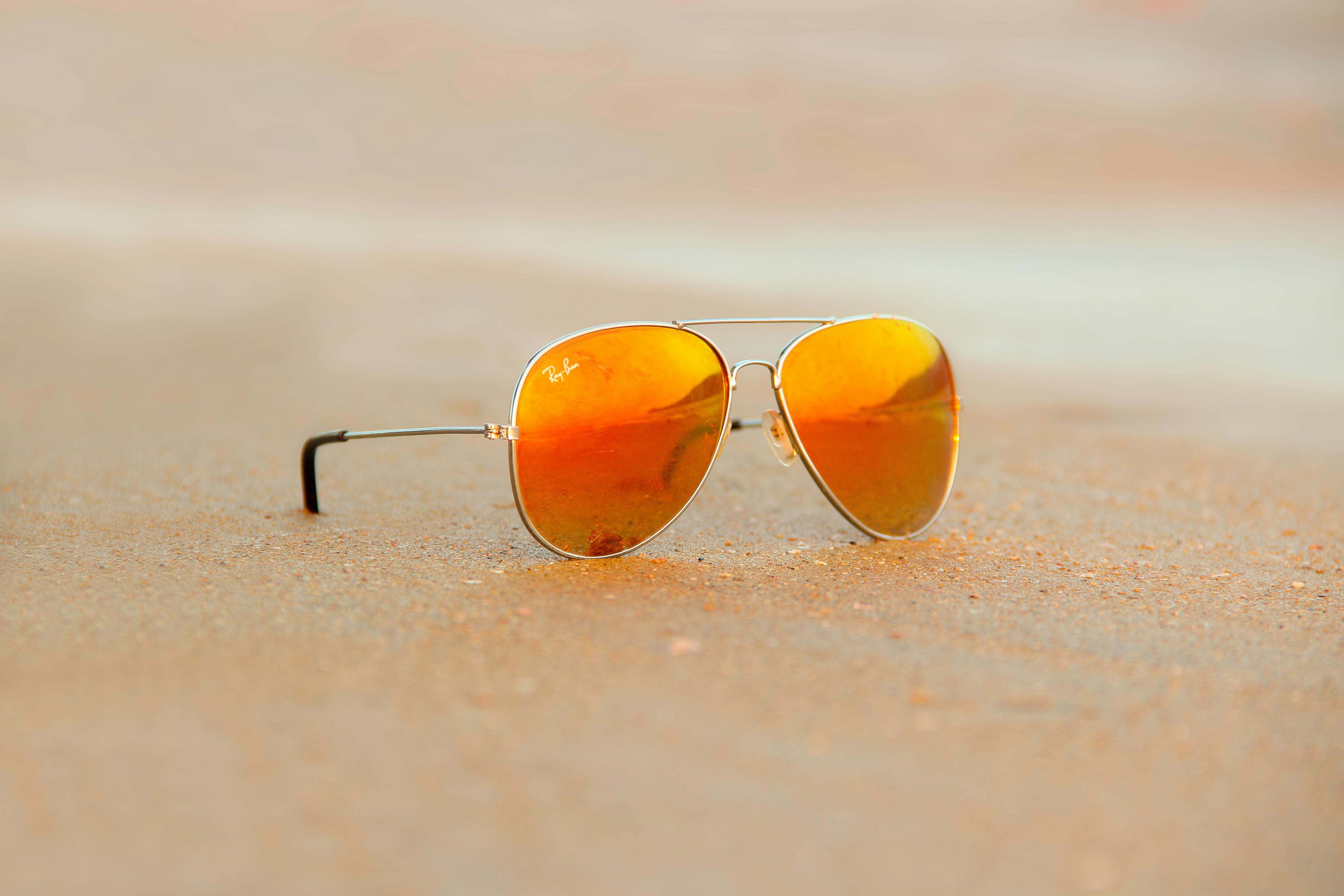
Protecting our eyesight against harmful ultraviolet (UV) rays is essential. But, we also know that getting out into the sun is good for our overall health.
So, what can we do?
The answer is simple. You need to be aware that the sun can damage our eyes even on the cloudiest of days.
According to the American Optometric Association, almost half of consumers don’t check UV protection levels of sunglasses before buying a pair.
It’s vital to protect our eyes with top-quality sunglass lenses, even if it doesn't feel like the sun's hurting our eyes. If you’re a contact lens wearer, you should also check whether your lenses have UV protection.
If they don’t absorb UV light, then sunglasses are the order of the day. Period.
Today, there are many high quality and affordable sunglass lenses and frames to choose from. Most types are now designed to protect our eyes against the sun’s harmful rays. So, let's explore this in a little more detail!
Why Do We Need Sunglass Lenses?
There are three different types of ultraviolet light. There's UVA, which passes through the glass. Then there are also UVB rays that don't go through lens and are the most harmful to our eyesight. Lastly, there are UVC rays that are blocked by the atmosphere.
The sun is at its peak after noon, so it’s essential to wear good quality sunglass lenses to protect our eyes, not only when sunbathing.
Wear them during any outdoor activity, be it skiing, cycling, walking, or swimming or eating lunch outside with friends.
Looking Past Fashion
The better the quality of our sunglass lens, the more protection our eyes receive. If you buy a cheap pair, there’s every risk your eyes won't be protected. That's especially true if there’s no UVB or UVA protection.
Yet there’s no reason why one can’t have a fashionable and protective pair of lenses, but it’s essential to focus on more than style alone.
Types of Lenses
Most people go for brown or grey colored lenses because they reduce our color perception the least.
Some people prefer yellow lenses, especially athletes because they work well in low light. We’ve all seen Olympic runners wearing them on the track.
Photochromic Lenses
These automatically darken when you're out in the sunlight, or when daylight comes in from the outside. They then lighten again in low light.
The downside is that such lenses darken quickly, in less than a minute, but lighten in around five minutes, taking longer to adjust to different light. They come in all shapes, materials, and sizes and can be clear, bifocal, and high-index.
Blue Lenses
Like the sun, our computers, tablets, smartphones, TVs, and certain types of lighting all emit blue light. This is harmful to our eyes. Wearing frames with blue lenses affords a layer of protection.
Anti-Reflective Lenses
These are often worn for sports and are sometimes known as “AR lenses” or “anti-glare lenses” because of their coating.
Such lenses can reduce the glare from the sun, protect sunglass lenses from scratches, and offer UV protection. They limit the amount of light hitting our eyes.
Polarized lenses: These are probably the most well-known of glasses on the market. They reduce the sun’s reflected glare.
For example, when sunlight reflects off surfaces such as water, cars, windows, and concrete. They can be prescription or non-prescription and provide UV protection. Many polarized lenses now come with a UV-blocking substance.
Choosing the Right Lenses and Frames
We spend a reasonable amount of time choosing eyeglass lense colors and frames, so what’s the difference when selecting sunglass lenses and materials?
Good quality sunglasses are essential for protecting our eyes. They’re more than merely a cool fashion accessory.
It’s paramount to buy sunglasses that block every last bit of UVA and UVB light. Check the labels and product descriptions before buying.
Larger frames and wraparound frames work better than smaller frames when it comes to protecting our eyes. Light can still get in at the sides of smaller framed sunglasses.
Lenses
The materials used in sunglass lenses and frames are essential too. For lenses, glass is more expensive, but it’s more resistant to scratches.
Acrylic is cheap and suitable for casual use, but it doesn’t last long and can distort.
Polycarbonate lenses are transparent and light but scratch easily. They’ve been around since the 1970s. Initially, developed for Air Force helmet visors, polyurethane is lightweight, more expensive, and resistant to impact.
Most sunglasses now have plastic lenses, and the better ones are scratch and impact resistant.
Frames
Frames are made from nylon, metal, acetate or castor-based polymer. Nylon is cheap, light and lasts longer than metal. Metal frames are easier to adjust, whereas nylon frames can snap.
Metal also costs more and can get hot in hot weather! Usually, frames comprise of titanium, steel or aluminum. Acetate frames are less flexible, and best not used for sports for that reason.
Finally, the castor-based polymer is derived from castor plants. It is light, long-lasting, and contains no petroleum.
Ready to Buy a Pair of Sunglasses?
Before rushing ahead and grabbing the first pair of sunglasses we see, it’s essential to do our research. Consider what you'll use the glasses for and how often, and check the labeling for protection from the sun.
Check out our latest high-quality designs to find the best-fit sunglasses for your needs. Feel free to contact us if you have any questions before you buy.





